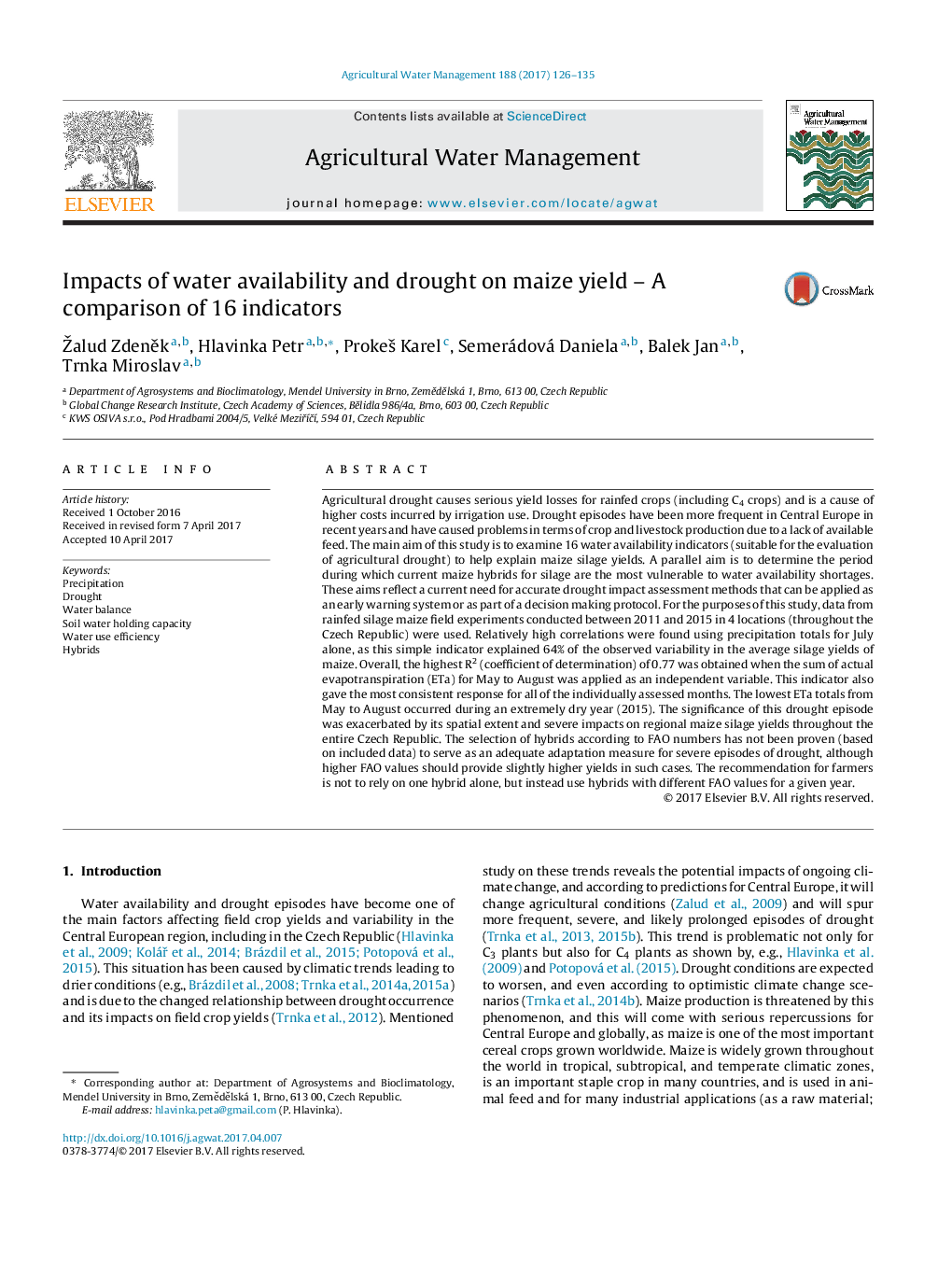| Article ID | Journal | Published Year | Pages | File Type |
|---|---|---|---|---|
| 5758332 | Agricultural Water Management | 2017 | 10 Pages |
Abstract
Agricultural drought causes serious yield losses for rainfed crops (including C4 crops) and is a cause of higher costs incurred by irrigation use. Drought episodes have been more frequent in Central Europe in recent years and have caused problems in terms of crop and livestock production due to a lack of available feed. The main aim of this study is to examine 16 water availability indicators (suitable for the evaluation of agricultural drought) to help explain maize silage yields. A parallel aim is to determine the period during which current maize hybrids for silage are the most vulnerable to water availability shortages. These aims reflect a current need for accurate drought impact assessment methods that can be applied as an early warning system or as part of a decision making protocol. For the purposes of this study, data from rainfed silage maize field experiments conducted between 2011 and 2015 in 4 locations (throughout the Czech Republic) were used. Relatively high correlations were found using precipitation totals for July alone, as this simple indicator explained 64% of the observed variability in the average silage yields of maize. Overall, the highest R2 (coefficient of determination) of 0.77 was obtained when the sum of actual evapotranspiration (ETa) for May to August was applied as an independent variable. This indicator also gave the most consistent response for all of the individually assessed months. The lowest ETa totals from May to August occurred during an extremely dry year (2015). The significance of this drought episode was exacerbated by its spatial extent and severe impacts on regional maize silage yields throughout the entire Czech Republic. The selection of hybrids according to FAO numbers has not been proven (based on included data) to serve as an adequate adaptation measure for severe episodes of drought, although higher FAO values should provide slightly higher yields in such cases. The recommendation for farmers is not to rely on one hybrid alone, but instead use hybrids with different FAO values for a given year.
Related Topics
Life Sciences
Agricultural and Biological Sciences
Agronomy and Crop Science
Authors
Žalud ZdenÄk, Hlavinka Petr, ProkeÅ¡ Karel, Semerádová Daniela, Balek Jan Balek Jan, Trnka Miroslav,
